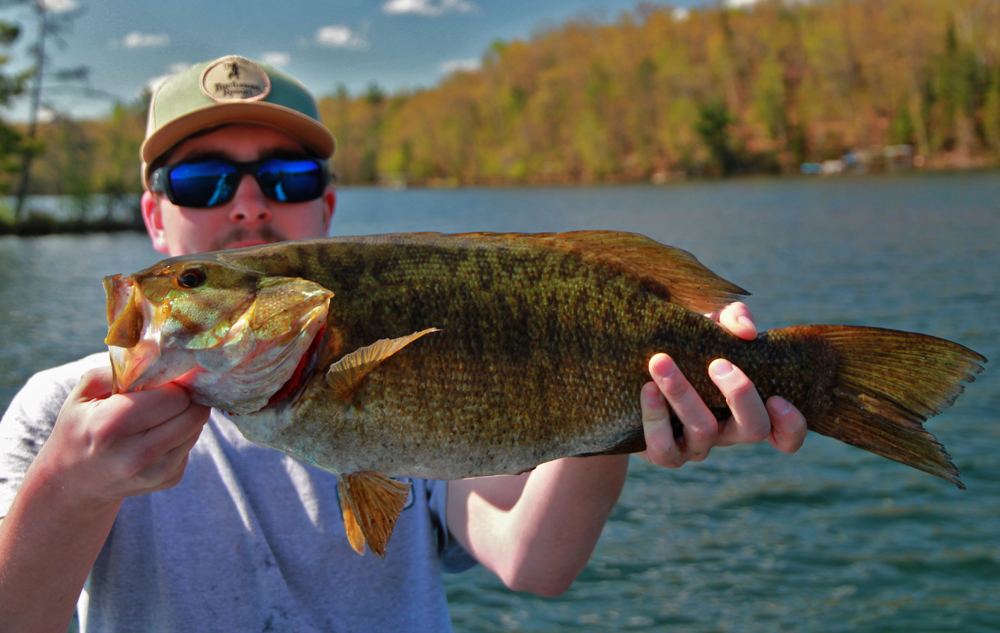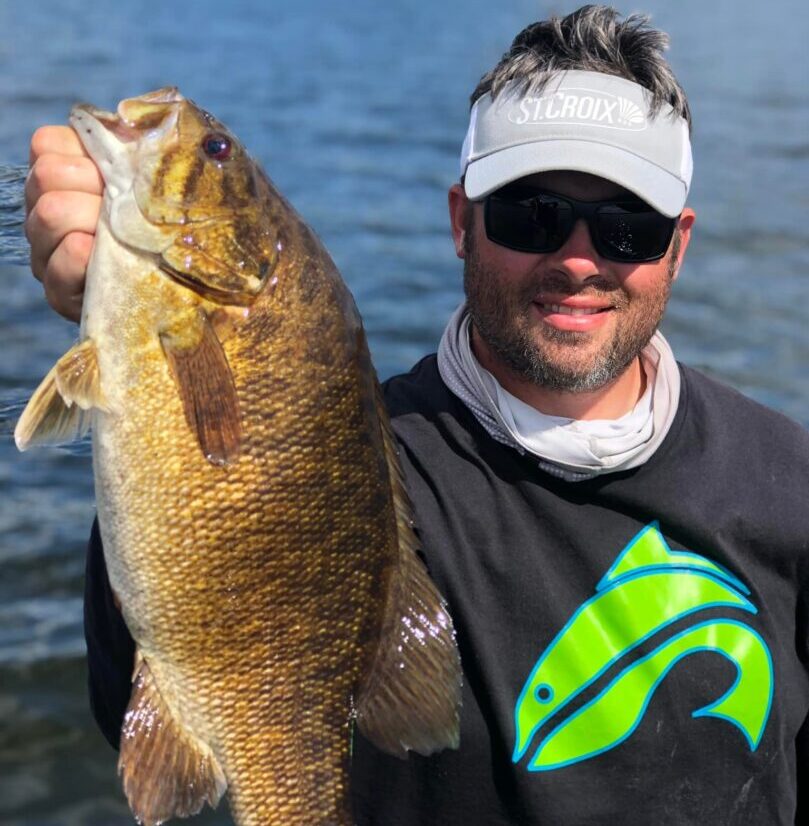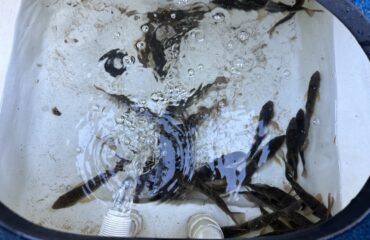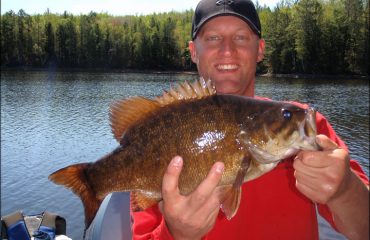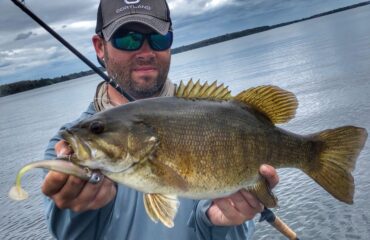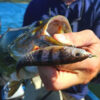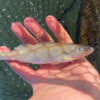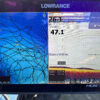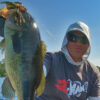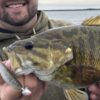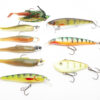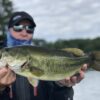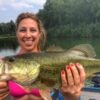Window Fishing
Successful fishing is all about right time, right place. The right time and place for my boat to catch the biggest fish of the year is in May, and later in September and October. The spring spawn, September feeding, and October wintering periods create vulnerabilities for smallmouth, where the biggest fish are most apt to be feeding, schooling, or wintering.
These timeframes are also when female bass will be at their heaviest weights. The largest smallmouth bass I’ve ever caught, a 7 ½ pounder, was caught during a sunny, warm afternoon during the full moon of May, 2018. This exact afternoon coincided with the start of the spawning season that year.
Of course, any time of the year can produce a trophy too. My boat has captured 6 pounders on random days and during non-peak seasons. In my mind-set, every day I’m guiding or leisure fishing trophy water has the potential for a big fish.
Timing is important on every fishery. This is most evident during spring and fall when geography can dictate your destinations. The further north you travel, the smallmouths of certain lakes can be in different stages of a season.
In spring for example, smallmouths in Oneida County, Wisconsin could already be spawning on most lakes during the third week of May. The next day, travel 50 miles further north to fish the lakes of Gogebic County, Michigan, the higher elevation and cooler climates of the region could have most smallmouths just entering pre-spawn. Later in the year, just the opposite will occur in autumn, relating to wintering. The further south you’ll travel to fish, the later in the season they’ll winter.
The same concepts also apply to rivers and flowages, which are always ahead of the game compared to the lakes. Smallmouths on these fisheries spawn sooner because they warm quickly in comparison. Fish in the river could be spawning by late May, while most lakes in the region are still in their pre-spawn patterns. Later in the year, smallmouths move to their wintering holes sooner, as these waters don’t stratify. These movements begin as early as September, whereas on the lakes do not occur until they turn over in early October.
However you go about with scheduling a trip, be mindful of the seasonal timing. Second, always pay close attention to weather, fishing pressure, recreational traffic, and situations that make smallmouths negative.
Never schedule a trip during brutal coldfronts – delay and fish around them if you can. Don’t fish where there are big weekend derbies happening, and wherever fishing pressure is high. Avoid high-traffic waters also. Trophy smallmouths are keenly aware of their surroundings, becoming skittish and elusive.
Target trophies during the spring and fall months for best odds, when fish are concentrated, feeding heavily, and put themselves in vulnerable positions to be caught.
My log books and trip records prove it. To seize the moment, timing is everything.
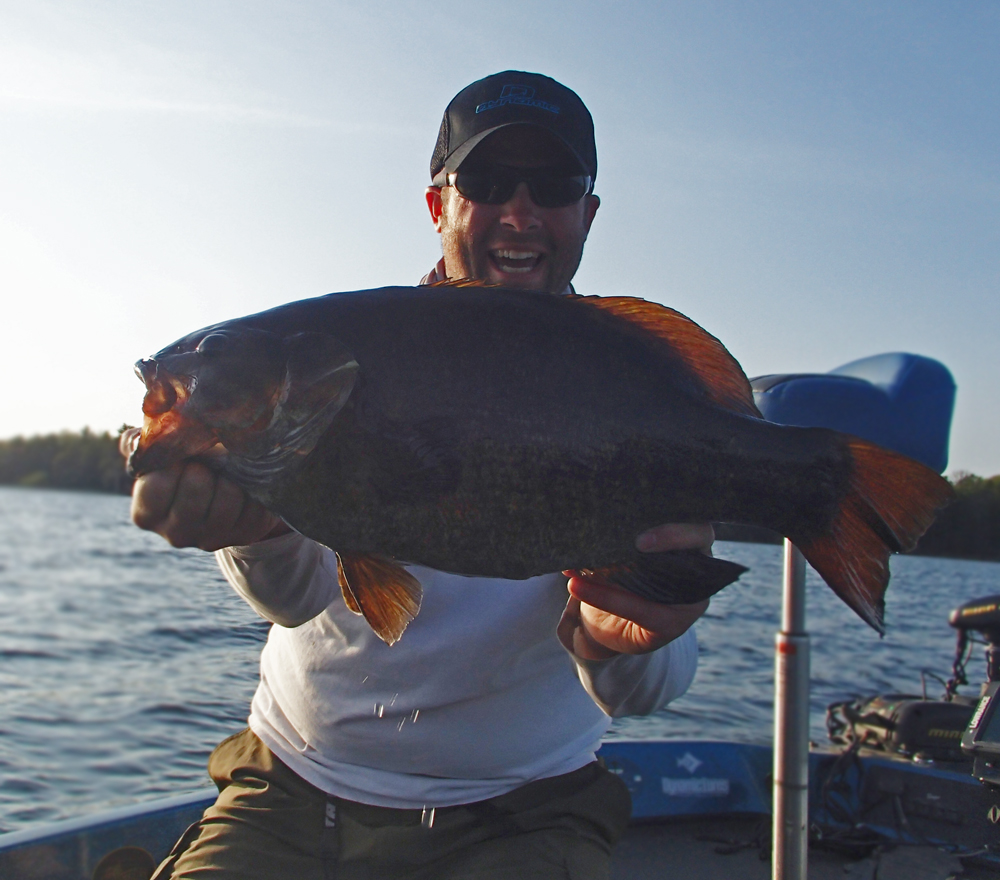
Other Window Shopping Considerations
6-pound smallmouths are wise creatures that have been around the block several times before. The trophy smallmouth bass we catch and release from the inland lakes of northern Wisconsin are irreplaceable 20 year old fish that are the most valuable members of the population. In many of our best waters, some of these fish are caught and released multiple times throughout a single season. With their conditioning to lures and locations, coupled with angling pressure by fishermen and the exploitation from today’s electronics, catching and releasing these trophies now requires more tactfulness, intellect, and strategic planning than ever before.
If you didn’t think it was possible, predicting lunker days can be done accurately. Whether you have limited fishing time, or you want to maximize opportunity and fishing potential, go when you think big smallmouth will be biting. In my pre-guiding days, I reserved nearly all of my trophy hunts for these specific days only.
Weather, water temperatures, moon phase, and forage abundances are keys to predicting when best fishing can occur. Throughout the calendar year, several natural stimuli like these help trigger bites.
Good stable weather and climate in positively influences bass fishing, making it easier to predict feeding habits and locations. Bad weather on the other hand negatively impacts bass fishing too. Cold fronts are so detrimental to fisheries that they can shut down feeding at most lakes unless the current within a river system or flowage helps minimize the impact and effects.
Slight weather changes such as wind shifts, overcast skies, light rain, good moon phase and lunar tables (new moon and full moon), and dropping pressure temporarily makes fishing even better, triggering more feeding windows. Early mornings, evenings, and nighttime hours are producers in summer, while midday and afternoon fishing is best in spring and fall.
The trophy smallmouth bass knowledge I employ and educate to others was not acquired overnight. The thousands of hours I have invested and accumulated on the water have enabled me to identify windows and peak periods for every season and in some cases each week of every month. I have also been able to identify peak periods and unique windows for every specific lake I fish – only fishing them during those periods! This systemic identification of anticipating the best fishing odds and opportunities has resulted in superior results and good fishing, daily. The patterns can repeat themselves annually too. Today, all of the bass fishing trips I plan for and schedule revolves entirely around seasonal windows and peak periods for my fishing region and its specific waters. It’s an advantage I have over all bass fisheries, and every other bass angler I share the water with.
Catching trophy bass won’t be as consistent or successful without prioritizing your precious fishing time around windows and peak periods. If you’ve identified them and know what ‘makes the lake click’ you’ll be able to tap into that fishery’s largest specimens.
